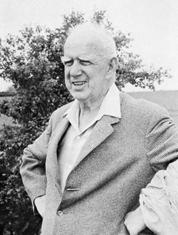“A very generous gift of more than 88,000 Irish Hymenoptera, donated by A. W. Stelfox of Newcastle, County Down, is the first important acquisition of this group from the British Isles.”
—Smithsonian Year 1967, p.115
Bees, wasps, hornets, winged ants and sawflies are the more well-known examples of Hymenoptera. The Smithsonian’s Department of Entomology had been collecting insects of this scientific order since 1881. Despite the department’s regular acquisition of entomological specimens, it was over eighty years before the Institution acquired a really significant collection from the Emerald Isle. I found myself asking why this Irish native and lifetime member of the Belfast Naturalists’ Field Club donated his extensive collection to the Smithsonian over other museums in the United Kingdom.

I came across Arthur Wilson Stelfox’s field books will working on the Smithsonian’s Field Book Project. In over 30 handwritten journals that now live with the Smithsonian Institution Archives, Stelfox recorded his Hymenoptera collecting excursions across Ireland between 1921 and 1965. In two additional journals, Stelfox detailed his work collecting land and freshwater Mollusca. Looking to learn more about him, I turned to the Archives’ finding aid for his personal papers, where I learned that he had donated his collection to the Smithsonian and began to look more closely at the man and the circumstances around his donation.
From a number of articles in the Irish Naturalists’ Journal, I discovered elements that helped to explain Stelfox’s decision. He was long known for his collaboration and generosity to fellow naturalists and students, and he insisted that his specimens would continue to provide insight to entomologists for decades to come. Their new home had to be a place where that vision would be most effectively realized.
Stelfox had collected long series of Hymenoptera specimens over forty years in order to study variations between and within species. Given the state of the discipline in Ireland and the lack of space and staff in British museums, Stelfox looked west and found that variation within a species was an active field of research in the United States and that sufficient capacity existed at the Smithsonian for his collection. Stelfox made the decision to donate the collection on the condition that it was made available for research.
Arthur Wilson Stelfox donated what Smithsonian entomologist Karl Krombein called “the largest and most complete collection of Irish Hymenoptera ever made,” including “many of the Irish species described more than 100 years ago,” so that entomologists could continue to learn from what he had so carefully collected and thereby advance scientific understanding. Sounds like an excellent fit with James Smithson’s mandate for the "increase and diffusion of knowledge."
We owe you a debt of gratitude, Mr. Stelfox.

Related Collections
- Arthur Wilson Stelfox Papers, 1904–1967, Record Unit 7379, Smithsonian Institution Archives
Related Resources
- Krombein, Karl V. "A.W. Stelfox Collection of Irish Hymenoptera Donated to Smithsonian Institution." Irish Naturalists' Journal 15, no. 10 (April 1967): 298-299.
- Smithsonian Year 1967, Smithsonian Institution, Biodiversity Heritage Library
- Graham, Marcus and H.G. Heal. "Arthur Wilson Stelfox, 1883–1972." Irish Naturalists' Journal 17, no. 9 (January 1973): 283-295.
- "Nora McMillan and Annotating Stelfox," by Jillian Williams, The Bigger Picture, Smithsonian Institution Archives
Produced by the Smithsonian Institution Archives. For copyright questions, please see the Terms of Use.

Leave a Comment